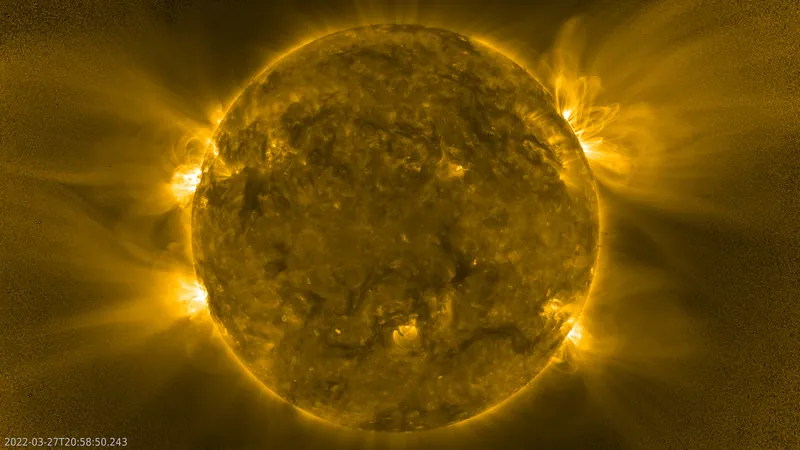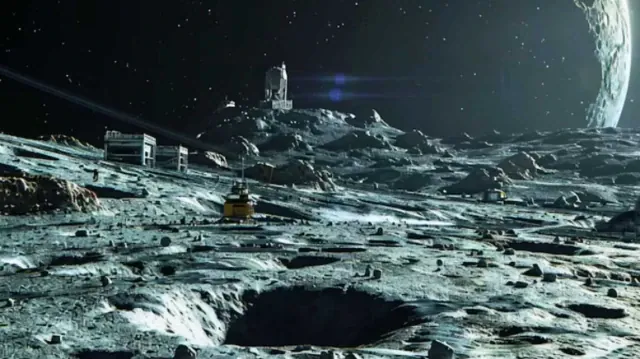
Revealing the Explosive Secrets of Superspeed Electrons from the Sun!
2025-09-01
Author: Noah
A Groundbreaking Discovery by Solar Orbiter
In a stunning revelation, the Solar Orbiter spacecraft, a collaboration between NASA and the European Space Agency (ESA), has traced the journey of electrons speeding towards Earth at nearly the speed of light directly back to the sun. This pivotal study uncovers their explosive origins within various solar phenomena.
Two Distinct Types of Superspeed Electrons
Researchers discovered two distinct categories of Solar Energetic Electrons (SEEs). One type is born from rapid solar flares, while the other hails from massive plasma eruptions known as coronal mass ejections (CMEs). According to Alexander Warmuth, the lead researcher at the Leibniz Institute for Astrophysics Potsdam, these energetic particles are released either in sudden bursts (impulsive events) or gradually over time (gradual events).
Solar Orbiter’s Unique Perspective
What makes this discovery revolutionary is Solar Orbiter's capability to observe SEEs at various distances from the sun, offering unprecedented insight into their behavior as they traverse the solar system. This detail aids scientists in understanding the lag time between a solar event and the subsequent release of SEEs, shedding light on why these particles sometimes take hours to escape.
The Journey of Electrons Through Turbulent Space
This mystery is partially attributed to the tumultuous conditions in space, where electrons face scattering and turbulence, complicating their detection. Team member Laura Rodríguez-García remarks that the path of these charged particles is also influenced by the solar wind, which drags the sun's magnetic field along with it.
Implications for Space Weather Predictions
The implications of this research extend beyond mere curiosity. Understanding the two types of SEEs could dramatically enhance predictions regarding space weather and its potential consequences on satellites and astronauts. High-energy electrons tied to CMEs present a greater threat, making this distinction crucial.
Solar Orbiter: A New Era of Solar Research
Daniel Müller, the ESA Project Scientist for Solar Orbiter, emphasizes that the data gathered during its initial five years in space has been instrumental in shaping a robust database for global researchers. This collaboration among European scientists and American colleagues demonstrates the power of uniting expertise to unravel the mysteries of our sun.
What's Next? Future Missions to the Sun
Looking ahead, the ESA plans to launch the Smile mission in 2026, which will delve into the solar wind’s behavior and its interaction with Earth's protective magnetic bubble. Furthermore, the Solar Observatory spacecraft Vigil is set to take flight in 2031 to monitor potential solar threats at the sun’s edges.
With these upcoming missions, our understanding of solar outbursts and their impact on Earth will only deepen, paving the way for more accurate space weather predictions.
Conclusion: A New Dawn for Solar Science
The groundbreaking findings published in the journal Astronomy & Astrophysics mark a significant leap in solar science, enhancing our comprehension of the sun's behavior and its implications on our technological landscape.









 Brasil (PT)
Brasil (PT)
 Canada (EN)
Canada (EN)
 Chile (ES)
Chile (ES)
 Česko (CS)
Česko (CS)
 대한민국 (KO)
대한민국 (KO)
 España (ES)
España (ES)
 France (FR)
France (FR)
 Hong Kong (EN)
Hong Kong (EN)
 Italia (IT)
Italia (IT)
 日本 (JA)
日本 (JA)
 Magyarország (HU)
Magyarország (HU)
 Norge (NO)
Norge (NO)
 Polska (PL)
Polska (PL)
 Schweiz (DE)
Schweiz (DE)
 Singapore (EN)
Singapore (EN)
 Sverige (SV)
Sverige (SV)
 Suomi (FI)
Suomi (FI)
 Türkiye (TR)
Türkiye (TR)
 الإمارات العربية المتحدة (AR)
الإمارات العربية المتحدة (AR)